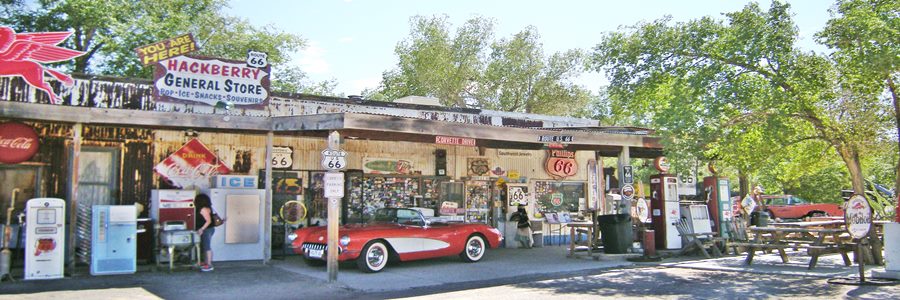Route 66 in Wingate NM
Index to this page
About Wingate, New Mexico
Facts, Trivia and useful information
Elevation: 6,750 ft (2.057 m). Population: n⁄a (2025).
Time zone: Mountain (MST): UTC minus 7 hours. Summer (DST) MDT (UTC-6).
Wingate was a railway depot on the Atchison Topeka and Santa Fe Railroad, on Route 66 located 3 miles north of Fort Wingatge, by Exit 33 of Interstate 40. It is located in McKinley County, New Mexico on Route 66.
Looking North from Route 66 at Wingate, New Mexico
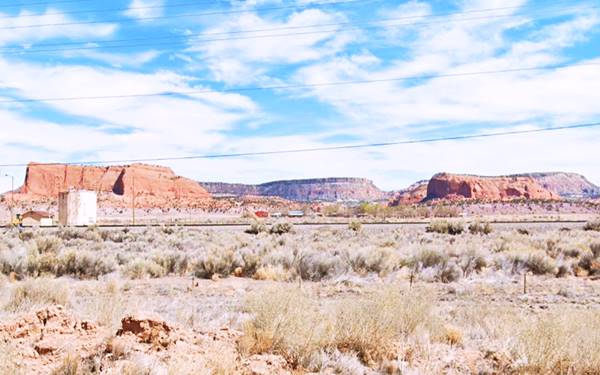
The area around Wingate has been inhabited for about 11,000 years; in more recent times, the Native Americans known as Diné or Najajo, have lived in the sandstone mountains to the north and south of Wingate.
The Spanish Conquistadors were the first Europeans to reach this region in 1540 when Francisco Vásquez de Coronado and his men defeated the natives and occupied Zuñi Pueblo. They later moved east reaching the Great Plains.
Almost sixty years later, the Spaniards returned and settled "Nueva Méjico" but they did not occupy the area where Wingate is now located. The Navajo people resisted their advances and attacked their settlements at Zuni, Laguna and Acoma pueblos, so the Spaniards left this part alone.
This bellicose situation did not change during the Colonial period (until 1821) and later when the territory became a part of an independent Mexico. Only after the Mexican - American War (1846 - 48) did the American Army take action to subdue the Navajo.
The army established Old Fort Wingate near Grants in 1862 and later moved it to its present location in 1864 after the establishment of the Navajo Reservation.
The original Navajo name of the site was "Shash Bitó" (Bear Spring), and it was located on the old wagon road linking Albuquerque, the Laguna Missions and the land of the Navajo, with Fort Defiance on the Arizona - New Mexico border.
In 1881, the Atlantic and Pacific Railroad (later acquired by the Atchison Topeka and Santa Fe Railway) advanced with its tracks across "Campbell Pass" and the Continental Divide, and built the station named Wingate as a supply point for the Fort and the Army.
In 1914 New Mexico State Highway #6 was built following the railroad and was a part of the National Old Trails Highway system. In 1926 Route 66 was aligned along the state highway and can still be driven, as the North Frontage Road of Interstate 40 which reaplaced it in the 1960s

Where to Stay: Find your Hotel near Wingate
There are no lodgings in Wingagte but you will find several accommodation options on Route 66 in neighboring Grants (to the east) or Gallup (west) so you won't have difficulty to book your room:
> > Book your Hotel in Gallup
More Lodging Near Wingate along Route 66
Below you will find a list of some of the towns along Route 66 in New Mexico. Click on any of the links to find your hotel, motel or accommodation in these towns (listed from east to west):
On Route 66's Main alignment
The Santa Fe Route 66 segment
Eastwards
Westwards
>> There are RV campgrounds close by, at Gallup
The weather in Wingate
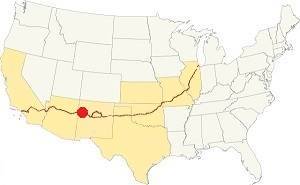
Location of Wingate on Route 66
Located in the high western part of New Mexico, the climate in Wingate is semi-arid climate with hot summers and cold winters. The altitude and dry air make summer nights cool and winter nights very cold.
The average summer high temperature is 89°F (32°C) and the low is a cool 51°F (11°C). During winter the average high is 45°F (7°C) and the average low is a chilly 11°F (-12°C).
The annual rainfall is scarce: 11.5 in (292 mm), most falls between July and Nov. (6.81 in, 173 mm). There are 72 days per year with precipitation.
Snow is frequent and heavy in winter with 30.4 inches (77.2 cm) yearly, which falls at any time between Oct. and May, but mostly between Nov and March.
Tornado risk
There is no tornado risk in Wingate: McKinley County has no Tornado watches. Route 66 west of this point, and all the way to California has no tornado events at all.
Tornado Risk: read more about Tornado Risk along Route66.
Map U.S. 66 in Wingate New Mexico
Read the Detailed Description of this segment (Albuquerque to Lupton). Below is the interactive map:
>> Custom map of Route 66 in Wingate
Maps of Route 66
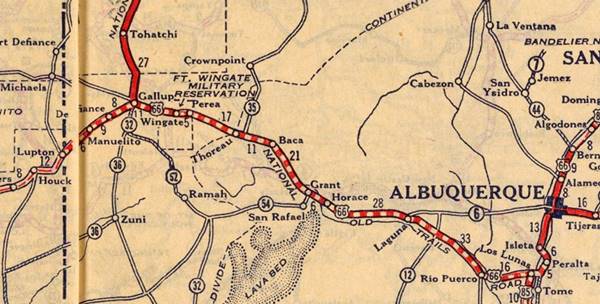
The original 1926 to 1937 US 66 ran further north, beyond the railroad tracks westwards from Coolidge to Perea. This is a dirt track with some remaining culverts, a mostly and some segments still in use. The gray line marks the approximate course of the 1920s-30s alignment. But it isn't 100% accurate. Our custom map marks the spot of an old bridge on this alignment near Staples and also the trading post B.I. Staples built on this alignment in 1926.
The 1937-60s course of Route 66 west from Coolidge has a short segment that can be driven there (map) but it is altered by Exit 44's ramps; from there to Perea the old road is buried under the freeway (yellow line) and resurfaces at Exit 36 to enter Perea.
Perea to Wingate and Gallup
Perea's ruins lie on the south side of the highway at its junction with Hwy 27. From here you have a 14 mile-long uninterrupted course into Gallup via Wingate, as shown in this map: Perea to Gallup map going through Wingate and Rehoboth.
Route 66 Alignment near Wingate
With maps and full information of the old roadway.
- Lupton to Winslow (next)
- Albuquerque to Lupton (Wingate's)
- Santa Rosa to Albuquerque (previous)
Wingate: its Attractions
Landmarks, Route 66 sights at an Old Far West Fort
Historic Context
Jack Rittenhouse wrote about Wingate in his 1946 Guidebook to U.S. Highway 66; first he mentions Perea and its trading post, and then Fort Wingate:
The entrance to FORT WINGATE... During World War II, Ft. Wingate served as a large munitions depot and quartermaster center. The Fort was originally established just after the Civil War and was later the location of a Navajo School. Rittenhouse (1946)
One mile west, he mentions "HISTORICAL MARKER: KIT CARSON CAVES" describing its text and adding that the caves can be visited and that a small addmission fee is charged. He also mentions the unusual natural formation in red rocks known as NAVAJO CHURCH.
Perea
Driving westwards from Coolidge the 1926-37 alignment meets the 1937-1980s Route 66 at a place named Perea.
After Continental divide, the A.T. & S.F. railroad split into two lines, one to the north, passing through North Guam and Ciniza, another to the south, passing through South Guam. They both met at a depot named Perea located on the eastern tip of Fort Wingate Military Reservation and just west of the native reservation. It was 4.2 mi. east of Wingate station and 5.7 mi. west of Coolidge - Guam.
The 1927 Rand McNally road map of New Mexico shows the brand new Route 66 and it also includes the town "Perea" as the only town between Thoreau and Wingate.
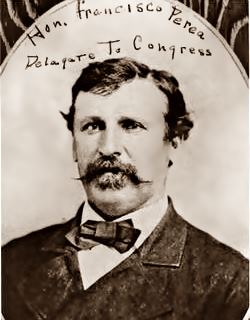
Francisco Perea Source
The name: Perea
Francisco Perea (1830 - 1913) belonged to a prominent local family, and his grandfather had been governor of New Mexico during the period it had belonged to Mexico. He was a supporter of the Union and fought in Apache Canyon battle in NM.
He was a congressman between 1863 and 1865 and later a member of the NM Territorial legislature. He was also a successful businessman.
The surname has a Basque origin and it means "Bero" = "fern" and "ira" = "where there are"; so Berea means "place where there are ferns. The initial "B" later changed into a "P".
Perea Trading Post ❌
It was mentioned by Rittenhouse as being located 3 miles east of Ft. Wingate: "Perea Trading Post. Gas here". It was located on the south side of the original Route 66 and operated between 1930 and 1956.
Its remains can still be seen on the south side of the highway (left) just to the west of the junction of NM27 with US 66 at Perea: There are two rectangular concrete foundations with some crumbled slabs of the former stucco walls and the ruins of a block shaped building to the south. See this Map with the location of the ruins. You can also see it in this aerial photograph taken in 1952.
Ruins of Perea Trading Post, Route 66 near Wingate
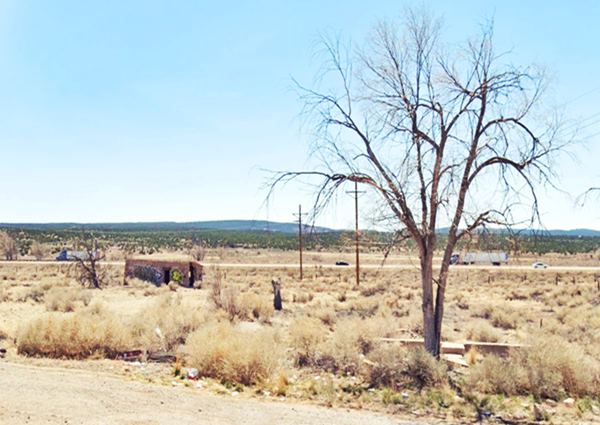
Drive west until you reach the freeway's Exit 33. To the south is Fort Wingate.
Visit Fort Wingate
Directions to visit the Old Fort: From Route 66 which is the north frontage road of I-40, cross to the south and head along NM-400, for 3 miles until reaching "Fort Wingate" as shown in this Map with directions.
On the south side of the freeway, to your right on NM-400 by the interchange is the Fort Wingate Marker (Street view) with a summary of the Fort's history. There is another marker at the Veteran's Park in Ft. Wingate, pictured below:
Veteran's Park and Ft. Wingate Marker
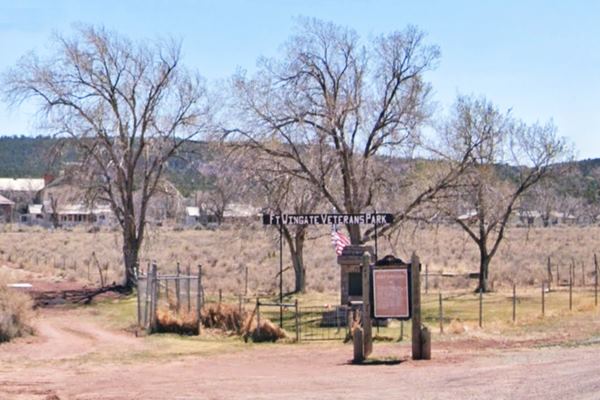
Just ahead is the Horseshoe monument, a stone monument shaped like a horseshoe on the top of a hill (map marking the spot).
There is another entrance to the Fort, on Navajo Blvd. 2.6 miles further west, you can see the archway from the freeway (St. view. It is pictured below.
Entrance gate to Fort Wingate
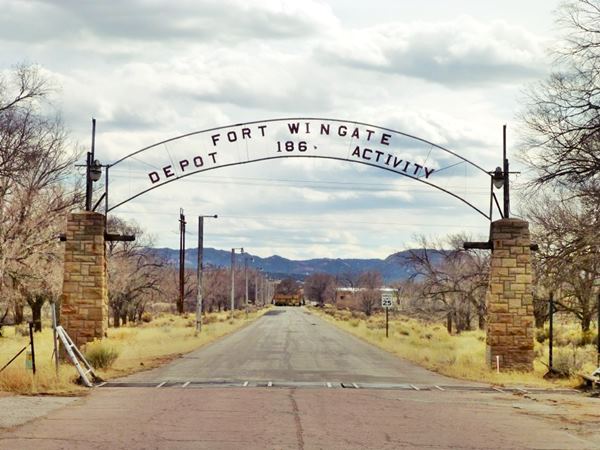
Navajo Reservation
The Reservation spans over 9 million acres and lies 20 miles north of Wingate. Larger than Massachusetts and New Jersey together.
The Navajo are actually the Diné people, which in their language means jut that: "The People". The Spaniards called them "Apaches de Navajo", after an old Tigua pueblo, Navahu.
Fort Wingate
The old fort is located on NM 400, Fort Wingate, NM.
Listed in the National Register of Historic Places
The Fort Wingate Historic District is an original Old West fort used in the wars against the Navajo people. Also known as Fort Fauntleroy, it was first established at Bear Springs in 1860 as a key to a campaign designed to subdue the Navajo people.
But the Civil War broke out and the campaign was aborted, and the troops relocated in the east to fight in the war. The Fort was abandoned around 1865.

General James Carleton. Source
A fort was established near Grants, when the Navajo continued their raids. It was commissioned on October 22, 1862, and was named Fort Wingate (now "Old Fort Wingate") after Cap. Benjamin A. Wingate an infantry officer who died during the Battle of Val Verde, fought on a ford on the Rio Grande on February 20 and 21, 1862 in Val Verde NM when an invading Confederate force defeated the Union troops that were controlling New Mexico yet soon after their victory, retreated back to Texas.
From this fort the commander, General James Carleton, fought against and defeated the Navajos. He relocated them in the Bosque Redondo Reservation forcing them to walk 400 miles in a terrible trek known to this day as "The Long Walk". The appalling conditions of the reservation which lacked water led to malnutrition, disease and death.
The US government signed a new treaty with the Navajo in 1868 allowing them to return to their homes and established a reservation encompassing their original homeland.
To enforce the treaty (previous ones had been broken by the Indians), a fort was needed, so the new commander, Gen. Getty moved the First Fort Wingate westwards to the site where Ft. Fauntleroy had once stood.
Since no further wars took place, the fort led a life of military routine, surveying, escorting scientific expeditions and serving as their base.
In 1870, President Ulysses S. Grant created a 100-square mile military reservation around the Fort, which was expanded in 1881 by adding 30 sq.mi. to the south of it.
The fort buildings were of adobe and timber from the neighboring Zuni Mountains. This contributed to a fire which burned the fort in 1896.
It was deactivated in 1911, reopened briefly in 1914-15 to house 4,000 Mexican troops and their families who fled Pancho Villa's Uprising and had requested asylum. After 1918 it was used to store ammunition that was returned from the war theater in Europe (World War I), becoming the largest ammo storage depot in the world.
In 1925 the compound and buildings were transferred to the Bureau of Indian Affairs so that it could be used as a boarding school for the Zuni and Navajo children. The old parade ground was converted into a baseball field.
Also in 1925 the part of the military reserve north of the railroad was put in trust for the Navajo Tribe and the southern 30 square miles allocated to the Manzano (now Cibola) National Forest. . The remaining area continued as munitions storage until 1992 thereafter being transferred to federal trust for the Navajo and Zuni nations.
The oldest remaining building constructed for army use was built in 1906 (the 1800s buildings all burned down in 1896) for a post exchange and recreation hall. It has now been converted into a boys dormitory called "The Hogan." A short distance to the northwest of the fort is a modern school built in 1965.
Trivia
- General Douglas MacArthur (1880 - 1964) played an important role during World War II in the Pacific Ocean. He was a five-star general and had been Chief of Staff of the United States Army during the 1930s.
As a child, he lived at Fort Wingate while his father Maj. Arthur MacArthur commanded the 13th Infantry in the early 1880s. - World War II and Route 66: The munitions storage facilities were used during WW II. Furthermore, and its facilities housed the Navajo code talkers while they trained.
Code talkers used a code based on the Navajo language, known only to native born Americans during the war, it was unbreakable.
Head back to the highway and head towards Gallup. One mile to the west, Rittenhouse describes a now disappeared historic marker, the Kit Carson Cave Marker.
Kit Carson Cave
The marker was located on the right side of the highway. Below is a "Then and Now" set of images of the spot; the red arrows mark the same features in the hills beyonr:
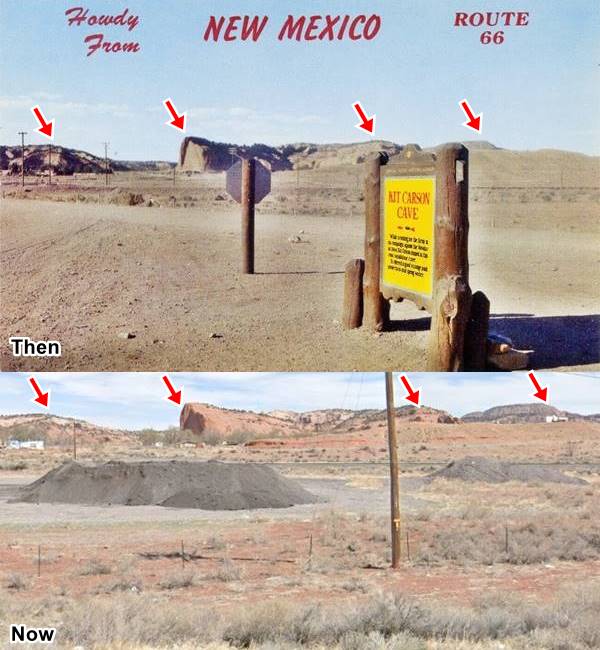
It is a 7.5 miles drive from Wingate along Old Route 66 and then north along Highway 566.
This place was mentioned as a classic sight to be visited in the 1940s and 50s, but now its popularity has declined together with that of its namesake, Kit Carson.
See the Map with directions from Wingate to Kit Carson Cave.
A now gone marker: Kit Carson Cave near Fort Wingate on Route 66, New Mexico
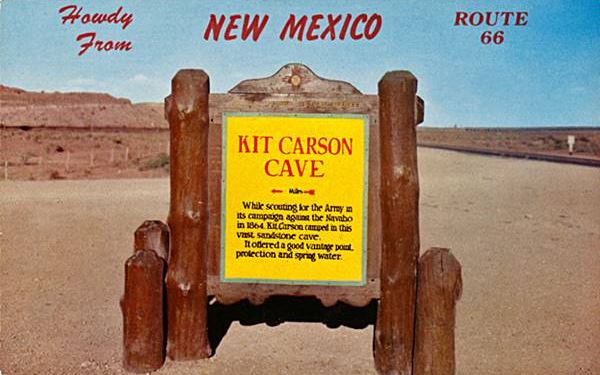
Controversial Kit Carson
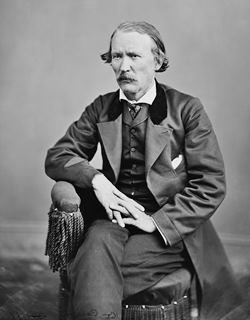
Christopher "Kit" Carson c.1860s. Source
Christopher Houston "Kit" Carson (1809 - 1868) was a trapper and scout. He fought in the American Civil War. He acted in New Mexico under General James Carleton, and at times did not obey his orders (such as "kill al the Indian men"), but even though he tried to resign his commission, he conducted an attrition war against the Navajo that forced them, starving, to surrender.
He did not oversee the deadly "Long Walk" that took them to their new reservation at Bosque Redondo. He retired to Taos where he was regarded as a hero, having defeated the ruthless Navajo. The terrible methods were those enforced by Gen. Carleton, Carson merely was a man of his time, and carried out his orders.
Revisionist history now paints him as a bloody racist (even though his first and seond wives were Native Americans). The Navajo people, obviously distrusted him, and modern Diné are entitled to consider him as they wish to, and that is why, in 2014 they renamed the Kit Carson Park in Taos NM as Red Willow Park, after the Tiwa name for Taos.
It is likely that the Historic Marker by Route 66 was removed during road building, but for some reason was not replaced.
The drive towards the Cave will let you see both Navajo Church and Pyramid Rock, to the west. The countryside is also great, enjoy the red sandstone.
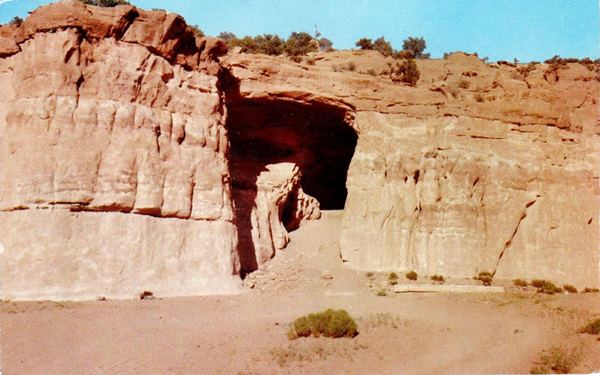
The scenery; Red Sandstone cliffs
Navajo Church
This natural feature is on the north side of the road, and is a sharp rocky pinnacle of white sandstone around 200 ft. high (61 m) mounted on top of red sandstone. Rittenhouse remarked that it is a sacred spot for the Navajo people.
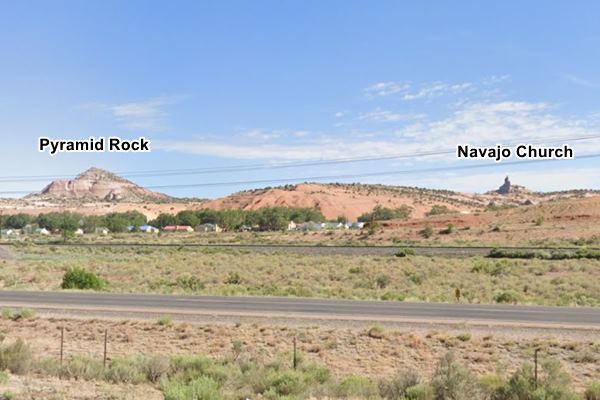
Pyramid Rock
Just west of the "church" is another sandstone hill shaped like a cone, the Pyramid Rock.
The area west of Wingate towards Rehoboth is a red shale valley. Here the highway runs much closer to the high red cliffs than it does further east. There are good views of the red and white sandstone, eroded by wind and water.
These rocks are known as the "Entrada Sandstone," a formation belonging to the San Rafael Group that is found across western USA, in Wyoming, Colorado, NW New Mexico, NE Arizona and SE Utah.
It was deposited during the Jurassic period between 180 and 140 million years ago in different kinds of environments such as beaches, dunes and tidal mudflats, beaches and sand dunes of a shallow sea, the Sundance Sea that covered western USA and Canada.
Continue your Road Trip
Your journey through Wingate ends here. Head west into the next town: Rehoboth NM, to continue your Route 66 Road Trip.
Sponsored Content

>> Book your Hotel in Albuquerque

Credits
Banner image: Hackberry General Store, Hackberry, Arizona by Perla Eichenblat
Jack DeVere Rittenhouse, (1946). A Guide Book to Highway 66.

